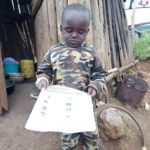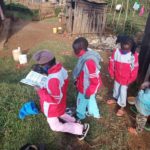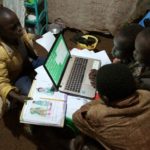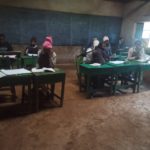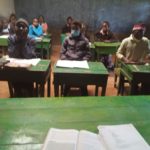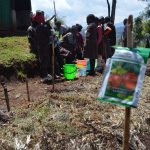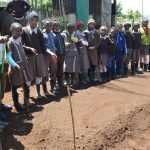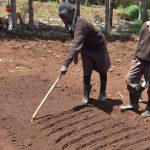Linguistic devices
Dialogue
It denotes a conversation between two or more interlocutors in a discourse. The poet in Betrothed employs this linguistic aspect to reveal a conversation between the two sides of the marriage agreement. “Three thousand shillings is not enough,” “Fathers, this is what we walked with!” “ …..as a token of our love.” This dialogue demonstrates the sober sense of conversation and careful use of language by the two sides. It reveal the themes of respect.
Imagery
This is the representation through language of sense of experience. The image most often suggests a mental picture, for example, in the poem Betrothed, the bride is described as someone who is educated, intelligent beautiful and well-mannered and no amount of money can buy her only love, the persona describes her as very beautiful in a figurative language “
look at her eyes.
Yes, look again
Two Diviners’ cowries spread out
Symbolically on the divination mat deep profound intelligent.” “look at her forehead, a nice wide trace between hairline and eyes.” The poet uses this graphology to unearth the subject of beaty and love.
Hyperbole
Is an exaggeration in the service of truth. Its an overstatement. For example, “Look at her silk, black hair darker and finer than that flywhisk there……” it communicate the aesthetic beauty and the pretty physique of the bride’s image/body. “ Three thousand shillings is not enough even to shake her by the hand.” It communicate the bride’s worth.
Rhetorical Questions
A rhetorical question is a question asked to make a point, rather than get an answer. In the Betrothed, the bride’s side asked rhetoric question, “But, young man, don’t you, don’t really feel three thousand shillings is not enough? This is used basically to reveal the value of importance that the groom carries with her. She is high breed kinda girl.
Symbolism
“Three thousands shillings is not enough”, this phrase is used symbolically to represent the unmeasurable value and the sacrifices the girl’s father went through. The word “token” is allegorically used to demonstrate that the bride worth is beyond any currency and the groom’s love is true love that should not be measured by any amount of cash.
Diction/local dialect
The poet has decided to employ digression as a style to communicate his thematic concern in the poem Betrothed. “Look at those lips ‘ndugu’” it illustrates a sense of emphasis on the bride’s beauty and intelligence.
Stylistic devices
Repetition
Repetition is the primary way of creating a pattern through rhythm. In the poem Betrothed the phrase, “Three thousand shillings is enough” has been repeated. It creates image of seriousness in the minds of the interlocutors about the topic of discussions.
Rhyme
Is the repetition of end sounds in two or more words or phrases that appear close to each other in a poem, for example in the poem Betrothed,
“for having fed her
Schooled her
Employed her
for having borne her
Cared her
Doctored her
And she is pure
This is a regular rhyme that creates musicality.
Assonance
Is the repetition of vowel sounds. For example, nice wide…bride…said. ……is not enough.
Consonance
Is the close repetition of identical consonant sounds, for example primary secondary and university upward.
Alliteration
Is the repetition of initial consonant sound. Three thousand shilling is not enough. For having fed her.
Mood or Atmosphere
This is the atmosphere in a literary work with the intention of evoking a certain emotion or feeling from the audience or readers. In the poem Betrothed by Obyero Odhiambo, the persona is not comparing his love to the bride price which is three thousand shillings, thus creating a convincing sound and shows that he is in the bride’s home negotiating bride price and showing how he loves her. The conversation takes sober mood.
Paralingualistic aspects
Intonation
The poet adapts this aspect to demonstrate groom’s innocence in this marriage agreement. “Fathers, this is what we walked with!” this line is performed through falling intonation to demonstrate innocence and respect.
Body gesture
The bride’s side uses body movement e.g the hands and body kinesis to communicate her intelligence and beauty. “she is immensely intelligent.”


